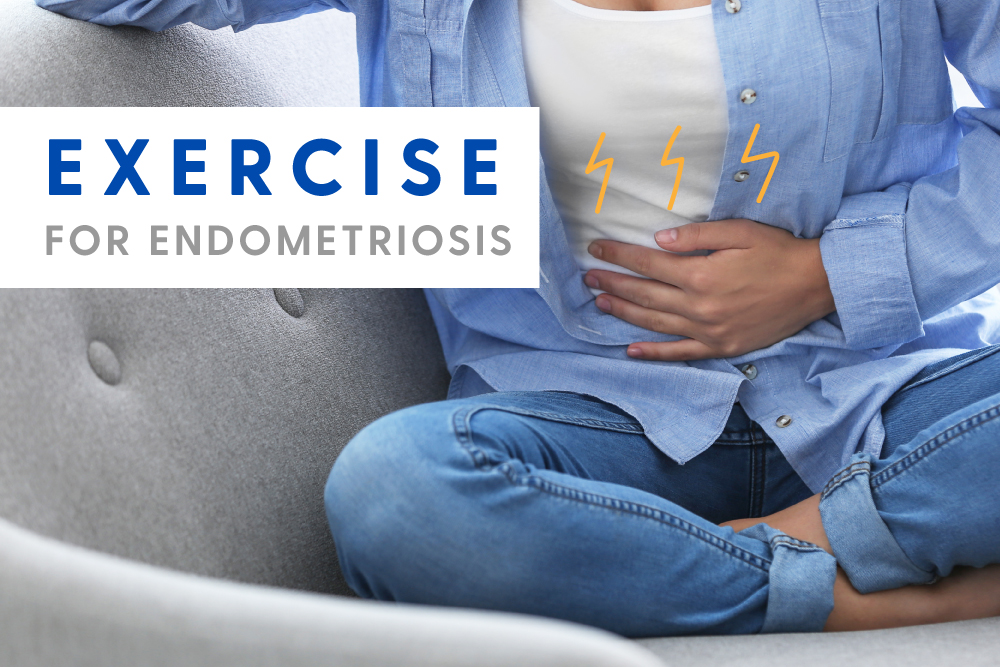
 Endometriosis, sometimes better known as ‘Endo’, is a chronic condition estimated to affect more than 700,000 Australian females. However, it is frequently under-recognised largely due to the vast array of symptoms an individual may experience. Due to this, and other contributing factors, the National Action Plan for Endometriosis from 2018, estimates that an accurate diagnosis takes on average between seven and twelve years.
Endometriosis, sometimes better known as ‘Endo’, is a chronic condition estimated to affect more than 700,000 Australian females. However, it is frequently under-recognised largely due to the vast array of symptoms an individual may experience. Due to this, and other contributing factors, the National Action Plan for Endometriosis from 2018, estimates that an accurate diagnosis takes on average between seven and twelve years.
Along with Exercise Right Week, May is also Pelvic Pain Awareness Month. Up to 1 in 5 females are affected by pelvic pain, with endometriosis being one of the potential common causes. Let’s see how exercise may be helpful to those with endo.
What is Endometriosis?
Endometriosis is a gynecological condition where ‘endometrial-like tissue’ grows outside the uterine cavity, usually around the pelvis. It is known as ‘endometrial-like tissue’, as it is not identical to the cells found within the uterus, however it shares a number of similarities.
Whilst endometriosis is fueled by the hormone oestrogen, there is currently no known cause for why this tissue growth forms outside of the uterus. Unfortunately, the human body is not equipped to remove these tissue growths, and with every menstrual cycle, scar tissue and adhesions can form through the associated hormone release. This can cause a wide range of symptoms such as chronic pelvic pain, dysmenorrhea, inflammation, bloating and cramping, all which have a significant effect on one’s health and quality of life. However, symptoms can vary significantly from person to person, and often symptoms do not correlate with the severity of the condition, leading to the often extensive delay in final diagnosis.
How exercise can help:
Regular physical exercise can have protective effects against conditions that involve inflammatory processes by increasing the body’s anti-inflammatory and antioxidant markers. These actions, plus the fact that exercise can reduce oestrogen levels, makes exercise very helpful for people with endo.
Currently there are no specific guidelines surrounding exercise prescription for individuals with endometriosis and exercise is prescribed to assist with symptom management, rather than an actual treatment for the condition itself. The pain and discomfort associated with endometriosis, often described as lower back and pelvic pain, can cause a guarding mechanism within the body – where the body braces to protect itself from pain. This bracing can affect areas such as the pelvic floor, abdominal wall, hip flexors and adductors, as well as affecting posture. An exercise program should always be individualised, and exercise can be used to help relieve some of the symptoms of endometriosis. For example, often movement-based and stretching exercises can help promote pain-free movement.
What exercises are recommended after laparoscopy?
Following an initial diagnosis of endometriosis via laparoscopic surgery, exercises that involve the muscles around the pelvis – the pelvic floor and glutes – can be a great way to start. Gentle progressions using resistance-based exercises to start activating the glutes include exercises such as:
- Clams or side lying leg raises
- Sit to stand (squat with chair assistance) with resisted hip abduction
- Glute bridging with resistance band
- Four point kneeling with alternating arm and leg lifts
Exercises focusing on these muscles help to support the lumbo-pelvic region of the body, so gradually adding in strengthening exercises can help manage your symptoms.
After laparoscopy, avoiding high intensity abdominal exercises (e.g. crunches) and high-impact exercise (e.g. burpees, box jumps) is recommended until you have allowed enough time for healing and recovery. It is always recommended to work with a professional like an Accredited Exercise Physiologist to assist in planning and managing your program.
